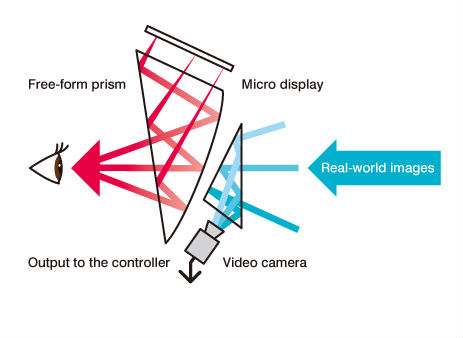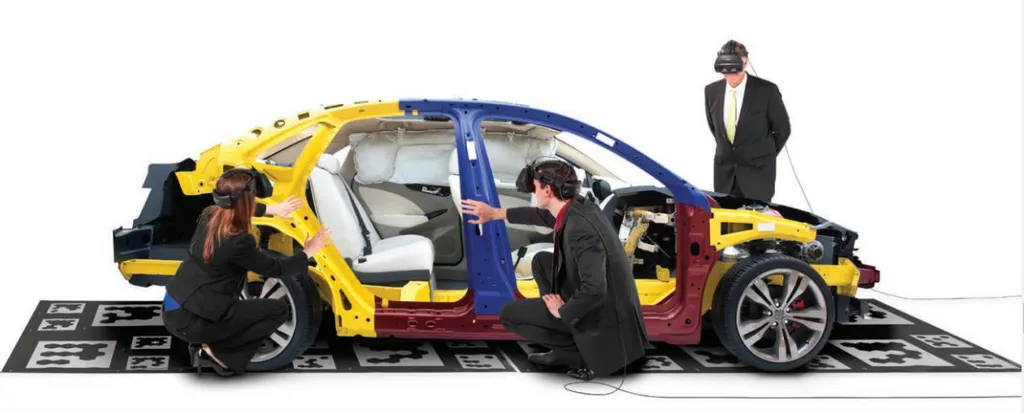My interest in VR/AR goes back years, but mixed reality really started to appeal to me when I saw how easy (relatively) the developers of Fantastic Contraption were making it to create a video merging two realities. I’ve researched as much as I can to the point that we’re using duct tape to mount a controller and emailing people along the entire VR development pipeline to find out if anyone is building tools to make the process easier.
In a larger sense, mixed reality extends from HoloLens and Magic Leap to the cool animated filters we see on Snapchat and MSQRD, the company recently bought by Facebook. It turns out Canon has had a visualization system for several years now directed toward business use cases merging real and virtual worlds. The latest, the MREAL MD-10, features a number of enhancements, including a 68-degree diagonal field of view, which should be larger than what’s seen when wearing the $3,000 Microsoft HoloLens. The price for the MD-10 doesn’t appear to be publicly listed and I’ve reached out to Canon to see how much it costs.
According to Canon, its mixed reality research dates back to 1997, but it wasn’t ready to become a product until 2012. The current system captures video from the real world where your eyes are, feeds it to a computer to be digitally enhanced, and then pipes the merged footage back to the headset so it can be displayed in front of your eyes. The system includes four cameras — one for each of the eyes and two more to capture position tracking information. Here’s a graphic of how the mixed reality functionality works:

The system comes in both hands-free and hand-held configurations for shorter viewing sessions. The system is compatible with a range of tracking systems including optical cameras (Vicon , OptiTrack, ART and Motion Analysis), magnetic sensors (POLHEMUS FASTRAK), markers and gyroscopic sensors (InterSense InertiaCube and MicroStrain GX4). Incidentally, Canon showed an extremely high resolution VR headset last year that was lacking a good tracking system.
The display resolution of the MD-10 is 1920×1080, which is roughly similar to the PlayStation VR headset — except that directly comparing them doesn’t work since the field of view of the Canon headset is much smaller than the PS VR system.
Overall, Canon seems to be pitching the system as a time and money saver if it can reduce the amount of time between prototypes, allowing people to examine the creation up close before it is built. Of course, this is precisely the same market that could be served incredibly well by the completely wireless HoloLens.


























